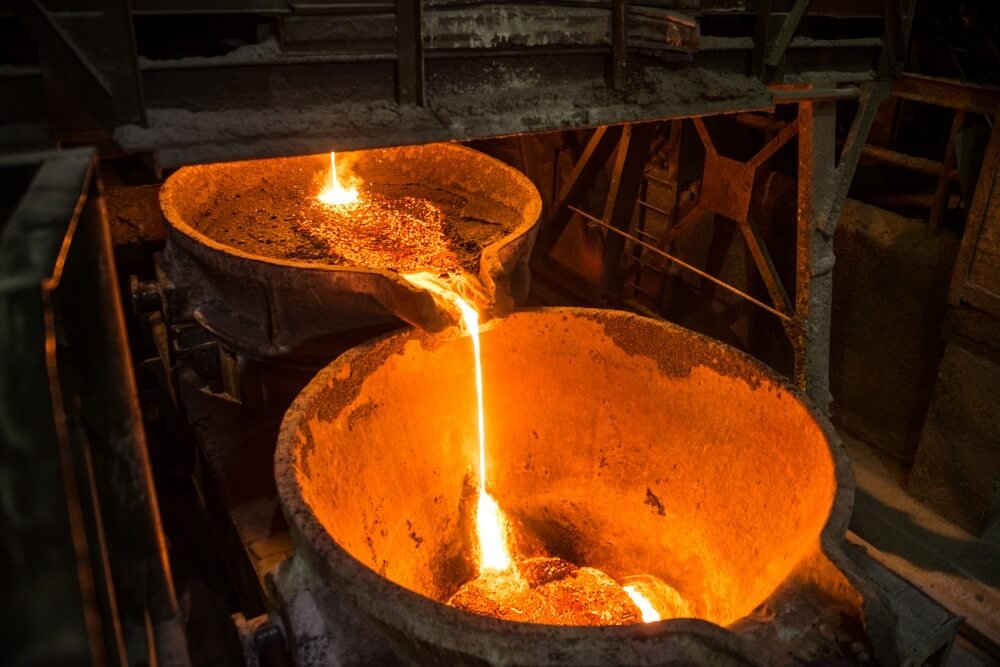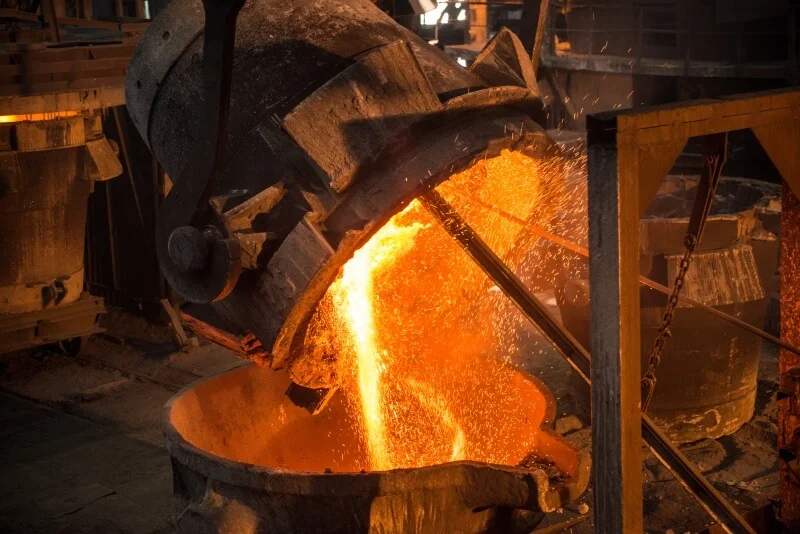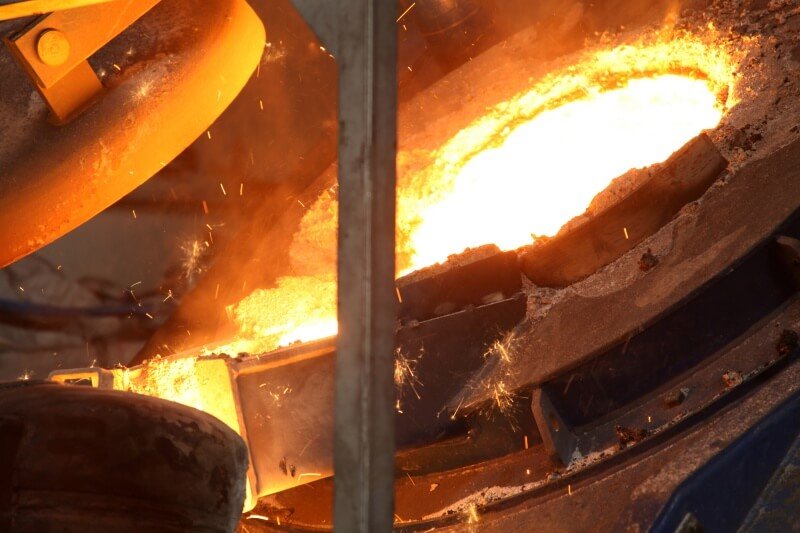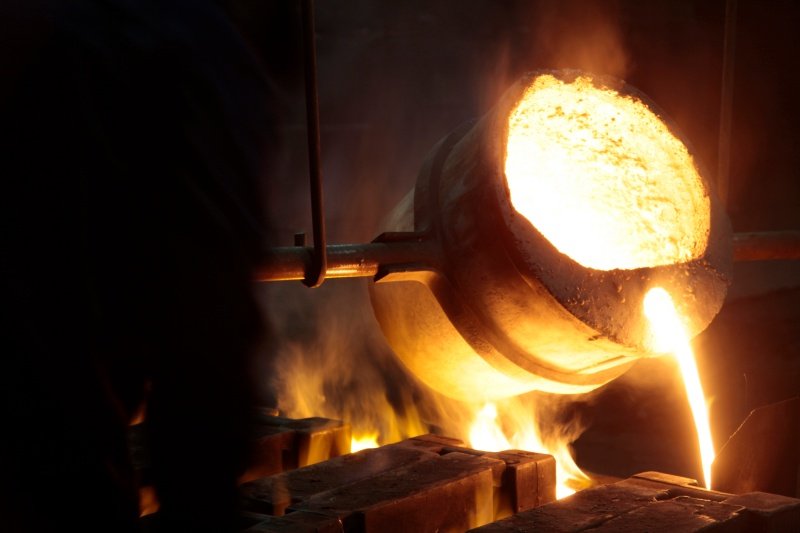Problem: Is Choosing the Right Metal Overwhelming?
You might be asking yourself whether aluminum die casting zinc die casting is the right call for your project. The complexity of material science combined with the high stakes of manufacturing makes this choice overwhelming. Every decision between these two metals has far-reaching effects—from your tooling budget and production efficiency to the final performance of your product.

Agitate: Why a Wrong Choice is Disastrous
What’s the real story? A poor material selection can trigger a cascade of disastrous outcomes for your project. You could face unexpected budget overruns from tooling failures, catastrophic part failures in the field, and costly production delays that leave you trailing the competition.
Solution: Your Definitive Comparison Guide
Look no further. This guide provides a direct, evidence-based comparison of zinc and aluminum die casting to empower you to make the best decision. We will break down the key differences so you can choose the most cost-effective and high-performing material for your specific application.
Props: aluminum die casting zinc die casting
How Do Mechanical Properties Differ?
Here’s the deal: zinc alloys are generally stronger and significantly denser than aluminum alloys, giving your parts superior impact resistance. While aluminum is no slouch, zinc provides a robustness that is critical for many structural applications.
- Zinc Alloy Strength: ~400 MPa
- Aluminum Alloy Strength: ~300 MPa
- Zinc Density: ~6.6 g/cm³
- Aluminum Density: ~2.7 g/cm³
What is the Impact of Melting Point?
But here’s the kicker, zinc has a much lower melting point of around 420°C compared to aluminum’s 660°C. This allows zinc to be cast using the faster hot-chamber process, which reduces cycle times. Aluminum’s high melting point necessitates the slower, more demanding cold-chamber process.
Which Material Has Better Conductivity?
Zinc features superior thermal conductivity, making it the ideal choice for components that need to efficiently dissipate heat. This property helps your electronic components, like heat sinks, stay cool and operate reliably under thermal load. While aluminum also conducts heat well, zinc’s performance in this area gives it a distinct advantage.
Key Takeaway: While aluminum offers good strength, zinc’s unique combination of higher density, greater impact strength, and superior thermal conductivity provides a clear advantage in specific mechanical and thermal applications.
| Property | Zinc Alloy (ZAMAK 3) | Aluminum Alloy (A380) |
|---|---|---|
| Tensile Strength | ~283 MPa | ~324 MPa |
| Melting Point | ~387°C | ~593°C |
| Thermal Conductivity | High (113 W/mK) | Moderate (96 W/mK) |
Weight: aluminum die casting zinc die casting
How Does Density Affect Part Weight?
What does this mean for you? An aluminum part will be substantially lighter than a zinc part of the exact same dimensions. This is because zinc is roughly 2.5 times denser than aluminum.
- Zinc is roughly 2.5 times denser than aluminum.
- Choose aluminum when lightweighting is a primary goal.
Is Heavier Always Better for Strength?
Think about it. While zinc is heavier and has higher impact strength, aluminum provides an exceptional strength-to-weight ratio. This balance is precisely why aluminum is a staple material in industries like aerospace, where every gram counts.
When Should You Prioritize Lightweighting?
You should prioritize aluminum’s lower weight for applications where mobility and efficiency are critical design goals. Choosing aluminum for your project can directly benefit its portability or improve the fuel economy of automotive and aerospace components. This makes it a go-to for portable devices and transportation applications.
Key Takeaway: The choice hinges on your application’s core function; for structural integrity in a fixed position, zinc’s weight is an asset, but for any application where mobility and efficiency are paramount, aluminum is the clear winner.
| Factor | Zinc Die Casting | Aluminum Die Casting |
|---|---|---|
| Part Weight | Heavier | Lighter |
| Strength-to-Weight | Good | Excellent |
| Best For | Structural applications | Lightweight applications |
Tool Life: aluminum die casting zinc die casting
Why Does Zinc Tooling Last Longer?
The bottom line is that zinc’s lower melting point and less abrasive nature cause significantly less wear and tear on die casting molds. The reduced thermal shock and lower material erosion on the steel tooling directly translates to a much longer operational life.
- Lower casting temperature reduces thermal shock on steel molds.
- Less abrasive material properties prevent erosion.
What’s the Shot Count Difference?
This is where it gets interesting. The difference in mold longevity is stark and has major cost implications for high-volume production. Molds for zinc die casting can often exceed 1,000,000 shots, whereas tooling for aluminum typically lasts for only around 100,000 shots.
How Does This Impact Tooling Costs?
Longer tool life directly saves you significant money over the lifetime of a high-volume product. Although the initial tooling costs might be similar, the frequent need to repair or replace molds for aluminum casting adds substantial long-term expense. This makes zinc a more economical choice for mass production.
Key Takeaway: For high-volume manufacturing, zinc’s superior tool life presents a major long-term cost advantage by dramatically reducing the need for frequent and expensive mold replacements.
| Metric | Zinc Die Casting | Aluminum Die Casting |
|---|---|---|
| Typical Mold Life | > 1,000,000 shots | ~100,000 shots |
| Tool Wear | Low | High |
| Long-Term Tooling Cost | Lower | Higher |
Cycle Time: aluminum die casting zinc die casting
Why is Zinc Casting Faster?
Here’s a quick rundown: zinc is cast using the hot-chamber process, which is inherently faster and more efficient. In this method, the injection mechanism is immersed in the molten metal, allowing for rapid-fire cycles.
- Hot-chamber: Molten metal is fed directly into the machine.
- Cold-chamber: Metal is melted externally and ladled in for each shot.
How Does Melting Point Affect Speed?
Now, consider this. Zinc’s lower melting point means it requires less time to heat up, and its higher thermal conductivity allows it to cool down and solidify much faster in the mold. This rapid solidification is a key factor that shortens the overall casting cycle.
What is the Production Rate Comparison?
The process advantages of zinc lead to a dramatically faster production output, getting your parts manufactured more efficiently. Zinc die casting cycle rates can be 150-200% higher than those for aluminum. This increased throughput is critical for meeting tight deadlines and scaling production.
Key Takeaway: Zinc’s compatibility with the hot-chamber process and its thermal properties result in dramatically faster cycle times, which increases production throughput and lowers the per-part labor cost.
| Factor | Zinc Die Casting | Aluminum Die Casting |
|---|---|---|
| Process Type | Hot-Chamber | Cold-Chamber |
| Cycle Rate | 150-200% Faster | Slower |
| Solidification | Rapid | Slower |
Cost: aluminum die casting zinc die casting
Which Material is Cheaper per Pound?
But wait, there’s more. While it’s true that aluminum has a lower raw material cost per pound compared to zinc, this is only one part of the total cost equation. This upfront material advantage can be misleading if you don’t consider the entire manufacturing process.
- Focus on the upfront material cost only.
What are the Hidden Production Costs?
What’s the real story? True production costs include tooling amortization, per-part cycle costs, and any necessary secondary finishing operations.
- Tooling Amortization
- Per-Part Cycle Cost
- Secondary Finishing Costs
How do you calculate the true total cost?
To calculate your true total cost of ownership, you must factor in production volume and manufacturing efficiencies. Low-volume projects might favor aluminum due to its lower material price, but high-volume runs often favor zinc because its tooling and cycle time savings compound to create a lower per-part cost.
Key Takeaway: A true cost analysis must extend beyond the material price tag; while aluminum is cheaper upfront, zinc’s efficiencies in tooling life and production speed can make it the more economical choice for high-volume runs.
| Cost Factor | Zinc Die Casting | Aluminum Die Casting |
|---|---|---|
| Material Cost | Higher | Lower |
| Tooling Cost (Lifetime) | Lower | Higher |
| Production Cost (per part) | Lower | Higher |
Corrosion: aluminum die casting zinc die casting
Which Material Offers Better Protection?
The bottom line is that zinc alloys possess excellent natural corrosion resistance, which is often superior to standard aluminum alloys. This inherent property allows zinc to form a protective patina when exposed to the elements.
- Zinc naturally forms a protective patina.
- Ideal for marine and outdoor applications.
Does Aluminum Corrode Easily?
Let’s dig a little deeper. Although aluminum is generally corrosion-resistant, it can be vulnerable to specific types of corrosion, particularly in certain pH environments. It often requires a secondary protective finish like anodizing or painting to ensure long-term durability in harsh conditions.
When is Native Resistance Enough?
Zinc’s inherent corrosion resistance can simplify your manufacturing process by eliminating the need for secondary coatings. This not only saves money but also removes an entire production step, streamlining your workflow. This makes it an excellent choice for parts intended for outdoor or marine use right out of the mold.
Key Takeaway: For parts exposed to corrosive agents, zinc’s intrinsic corrosion resistance provides a significant performance and cost advantage by often removing the need for post-processing treatments.
| Factor | Zinc Die Casting | Aluminum Die Casting |
|---|---|---|
| Inherent Resistance | Excellent | Good |
| Need for Coating | Often not required | Often required |
| Performance in Harsh Env. | Superior | Good (with coating) |
Thermal: aluminum die casting zinc die casting
Which is Better for High Temps?
Here’s the simple answer: aluminum is the superior choice for components that will operate in high-temperature environments. Its high melting point allows it to maintain its structural integrity where zinc alloys would weaken or fail.
- Aluminum Operating Temp: High
- Zinc Operating Temp: Low-to-Moderate
Which is Better for Heat Dissipation?
This might seem counterintuitive. Although it can’t withstand high ambient temperatures, zinc’s higher thermal conductivity makes it better at actively drawing heat away from a source. This makes it an excellent material for heat sinks in electronics and other heat-dissipating applications.
How do you pick for thermal applications?
The decision framework for your product’s function is clear and depends on the direction of heat. Use aluminum for parts that must survive in a hot environment, like an engine block. Use zinc for parts that must efficiently pull heat out of a system, like an electronic housing.
Key Takeaway: The choice requires a critical distinction: select aluminum for high-temperature durability and structural integrity, but choose zinc for efficient heat dissipation in lower-temperature applications like electronics.
| Thermal Application | Zinc Die Casting | Aluminum Die Casting |
|---|---|---|
| High-Temp Environments | Not Suitable | Excellent |
| Heat Dissipation (Heat Sinks) | Excellent | Good |
| Key Property | High Thermal Conductivity | High Melting Point |
Finish: aluminum die casting zinc die casting
Which Provides a Better ‘As-Cast’ Finish?
What does this mean for you? Zinc casting produces a much smoother and more consistent surface texture straight out of the mold, with fewer defects like porosity. This superior as-cast finish reduces or even eliminates the need for preliminary surface preparation before plating or painting.
- Smoother, more consistent surface texture.
- Reduces the need for preliminary surface prep.
How Easily Can They Be Plated or Coated?
But here’s the kicker, zinc’s smooth, non-porous surface makes it far easier and more reliable to apply a wide range of finishes. This is especially true for electroplating, where zinc provides an ideal substrate for a durable and high-quality cosmetic finish.
Does Aluminum Always Need Finishing?
Due to a rougher as-cast surface and a higher potential for porosity, aluminum parts almost always require some form of secondary finishing. This extra step adds time and cost to your production line, whether it’s for cosmetic appeal or for adding a protective layer.
Key Takeaway: Zinc offers a significant advantage in surface finishing by providing a better as-cast surface and being easier to plate, which can reduce or eliminate costly and time-consuming secondary operations.
| Finishing Aspect | Zinc Die Casting | Aluminum Die Casting |
|---|---|---|
| As-Cast Surface | Smooth, non-porous | Can be porous, rougher |
| Ease of Plating | Excellent | More difficult |
| Finishing Required? | Less often | More often |
Walls: aluminum die casting zinc die casting
Which Allows for Thinner Walls?
This is a game-changer for designers. Zinc’s excellent fluidity when molten, combined with its inherent strength, allows it to completely fill molds for parts with much thinner and more intricate wall sections compared to aluminum.
- Maintain structural integrity with less material.
- Achieve complex, near-net-shape designs.
Why Can’t Aluminum Go as Thin?
Let’s break it down. Aluminum is less fluid and solidifies more quickly at a higher temperature, which makes it difficult to force into very fine, thin sections of a mold. Attempting to do so risks creating incomplete fills, weak points, or other casting defects.
How does this affect part design?
The material properties of zinc give you much greater design freedom. You can create smaller, more complex parts without sacrificing strength and even consolidate multiple components into a single, intricate zinc casting. This simplifies assembly and often results in a stronger final product.
Key Takeaway: For parts requiring thin walls and high complexity, zinc is the superior material, offering greater design freedom and the ability to produce intricate, near-net-shape parts that are impossible with aluminum.
| Design Factor | Zinc Die Casting | Aluminum Die Casting |
|---|---|---|
| Minimum Wall Thickness | Thinner (~0.4mm) | Thicker (~0.9mm) |
| Part Complexity | High | Moderate |
| Design Freedom | Greater | More constrained |
Uses for aluminum die casting zinc die casting
What are Common Zinc Applications?
You’ve probably seen these everywhere: zinc’s combination of strength, finish quality, and design complexity makes it ideal for a variety of parts. It excels in applications where both performance and aesthetics are critical.
- Automotive interior components (handles, brackets)
- Complex electronic housings and connectors
- High-end decorative hardware (faucets, knobs)
- Mechanical gears and moving parts
Now, let’s switch gears.
Aluminum is the material of choice where its lightweight nature and high-temperature resistance are the primary requirements. Its excellent strength-to-weight ratio makes it indispensable in modern transportation and industrial equipment.
- Aerospace components
- Automotive engine and transmission parts
- Power tools and outdoor equipment housings
- Telecommunications infrastructure
How do you match material to industry?
To map your industry’s needs, use this simple decision matrix: if your priority is lightweighting and high-temperature performance, choose aluminum. If your priority is intricate strength, a superior finish, and high-volume producibility, choose zinc.
Key Takeaway: The ideal material is dictated by the application’s primary requirements—lightweight performance for aerospace and automotive powertrains (aluminum) versus precision strength and finish quality for electronics and hardware (zinc).
| Industry | Preferred Material & Reason |
|---|---|
| Aerospace | Aluminum: Excellent strength-to-weight ratio. |
| Electronics | Zinc: Heat dissipation, EMI shielding, complex shapes. |
| Automotive | Both: Aluminum for engine/powertrain, Zinc for interior/cosmetic. |
| Consumer Hardware | Zinc: Superior finish and feel, high strength. |
Conclusion
Summary of Your Solved Problem
You are no longer facing a confusing choice between two metals. By understanding the trade-offs in tooling life, cycle time, material properties, and cost, the decision is now clear. It’s a strategic choice based on your specific application priorities, production volume, and performance requirements.
Your Call to Action (CTA)
Ready to make the right choice for your project? Upload your CAD file today for an instant quote and a free DFM analysis. Let our experts help you optimize your design for manufacturing and ensure you select the perfect material.
Our Commitment to Your Success
Our mission is not just to manufacture parts, but to partner with you to ensure every component is optimized for performance, cost, and manufacturability. Your success is our success. We are committed to turning your innovative concepts into market-ready products with unmatched quality and speed.
Frequently Asked Questions (FAQ)
Q1: Can I use aluminum casting for parts requiring very high strength?
Generally, no. Zinc is the superior choice for applications demanding high impact strength and structural integrity, as zinc alloys are inherently stronger and more ductile than standard aluminum die casting alloys.
Q2: What’s the best option for a very tight project budget?
It depends on your production volume. For short runs, aluminum is often cheaper due to lower material costs, but for high-volume production, zinc frequently becomes more cost-effective because of its drastically longer tool life and faster cycle times.
Q3: Is it possible to get a chrome-plated finish on aluminum parts?
Yes, but it is significantly more difficult and costly than plating zinc. Zinc’s smooth, non-porous surface provides an ideal substrate for electroplating, resulting in a more durable and cost-effective finish.
Q4: My part needs to operate in a car engine bay. Which should I choose?
Definitely aluminum. Its high melting point allows it to maintain its structural integrity and mechanical properties in high-temperature environments, whereas zinc would weaken or fail.
Q5: Can I consolidate multiple steel components into a single die-cast part?
Absolutely, and zinc is often the better material for this. Its ability to form strong, thin, and complex geometries allows you to redesign multiple fabricated parts into a single, stronger, and more cost-effective zinc die casting.




